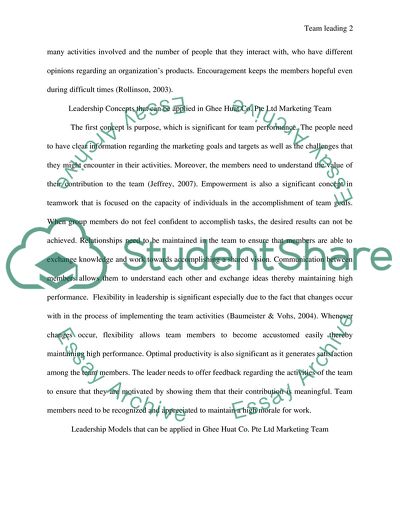Cite this document
(Leadership Skills in Ghee Huat Co. Pte Marketing Team Assignment, n.d.)
Leadership Skills in Ghee Huat Co. Pte Marketing Team Assignment. Retrieved from https://studentshare.org/human-resources/1734276-team-leading
Leadership Skills in Ghee Huat Co. Pte Marketing Team Assignment. Retrieved from https://studentshare.org/human-resources/1734276-team-leading
(Leadership Skills in Ghee Huat Co. Pte Marketing Team Assignment)
Leadership Skills in Ghee Huat Co. Pte Marketing Team Assignment. https://studentshare.org/human-resources/1734276-team-leading.
Leadership Skills in Ghee Huat Co. Pte Marketing Team Assignment. https://studentshare.org/human-resources/1734276-team-leading.
“Leadership Skills in Ghee Huat Co. Pte Marketing Team Assignment”, n.d. https://studentshare.org/human-resources/1734276-team-leading.


